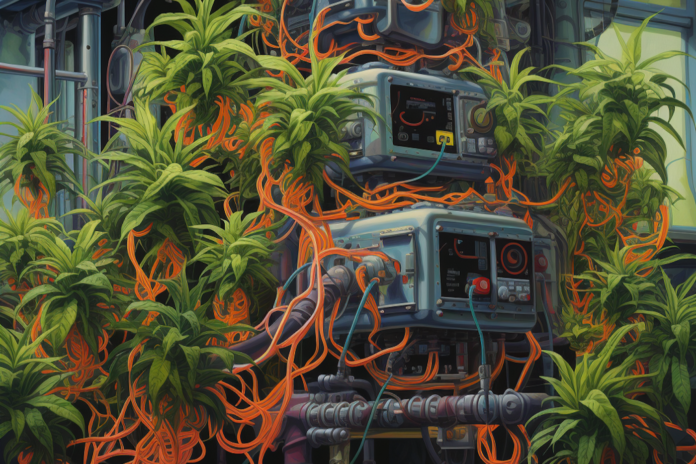Several years ago, I worked with a marketing team that wanted to convey their company’s technology was driving evolution in their industry. The tagline the team settled on was “The revolution will be televised.” But that R at the beginning of the word makes a big difference. Evolution and revolution are two very different things.
Revolution—from the same root word as revolve—refers to a turnaround, be it sudden or gradual. It implies a complete or radical change from the current course, often resulting in a reversal. Evolution, on the other hand, refers to gradual development or changes over a period of time. So, while the cannabis industry constantly evolves from its original state, few speak of it revolving and heading back toward where it started. Yet, to a certain degree, that is exactly what is happening now.
Earlier this year, I was in Vancouver for the Lift & Co. conference and expo. Since I was attending as a speaker, they allowed me to sit in on all the seminars and panel discussions. While I’d skipped many of these sessions in the past, I felt motivated to hear about the current state of the industry in the first G7 country to legalize adult use. Although I and others previously have pointed out similarities between Canada and California, one session really brought the comparisons home.
A gentleman representing a large organization supporting “craft growers” mentioned more than 70 percent of the flower sold at the beginning of legalization came from large-scale licensed producers. I was there when the country segued from medical-only to adult use, and people certainly were hard-pressed to find anything remotely close to what Californians consider craft. He went on to share that now, four years later, about 70 percent of the flower sold in dispensaries is produced by craft growers—which he defined as licensed producers with 200 or fewer employees. That’s about twenty to twenty-five times more people than the typical craft operation in California employs.
Why did this stat resonate with me so much? Because the rumors were true: People were voting with their wallets in the Great White North. This represented a watershed moment in the David-and-Goliath struggle between small-time growers and large-scale operators with bottomless bank accounts who had fatally underestimated the “Davids”—and there were a lot of them. Those who knew and grew the flower better than most. Those who always put community over corporate and embraced the bootstrap mentality of others like them around the world.
Fast-forward to a beautiful day in San Francisco, where I visited a show that has stood the test of time for nineteen years: The Emerald Cup. Tim Blake, the show’s founder, had set aside a few passes for me to come see the season’s finest grace the stage for some well-deserved accolades in a famously competitive growers’ market.
I and several other members of the old guard rolled into the venue with plenty of time to enjoy watching the sun set behind the Golden Gate. As I looked around the room at the “old hands” and younger generations alike, I once again was struck by our industry’s passion and respect for the plant.
As the emcee announced category after category and craft growers took prize after prize, I realized what I was watching: a revolution. It was reminiscent of what I witnessed earlier at the Canadian show. When California segued from Proposition 215 (medical) to Proposition 64 (adult-use), many friends fell back into the shadows or pivoted out of the industry altogether. At the time of transition, behemoth grows were coming online in places like Salinas County and Santa Barbara County. Heck, even the desert cities saw a surge of licenses in places like the Coachella Valley and Adelanto.
I know many across the country get tired of hearing about the Golden State and our challenges, but California often acts as a bellwether, hinting at what’s in store for the rest of the country. The California market is coming full circle, and the same thing likely will happen in other markets as time goes on. The craft or “cottage-style” growers are having their day. While loyalists never strayed from seeking the highest-quality flower, many Californians shifted to a bang-for-buck ideology starting in 2017, the year after Prop 64 passed. Now, consumers are realizing there’s an experiential difference in what they consume. Likewise, people are waking up from the indoor hype and giving more attention to beautiful, full-term outdoor flower. Personally, that’s been my favorite to grow and consume based on the terpene diversity alone.
So yes, the industry continues to evolve, but I am pleased to share that the product people demand has revolved: High-quality flower grown by passionate people who have mastered the art of cultivation over several decades is ascendant. Whether you call it “roots over suits” or “community before corporate,” a movement like the one they’ve seen in Canada is coming to America. And as a kid from the community, I support it.

Lance C. Lambert spent years cultivating brands and telling stories in the digital-media and marketing spaces prior to shifting his expertise to the legal cannabis industry in 2013. In 2022, he was named chief marketing officer at Grove Bags, where he’s tasked with growing the company’s footprint at home and abroad. A cancer survivor, he embraces and actively advocates for the plant.
- SEO Powered Content & PR Distribution. Get Amplified Today.
- PlatoData.Network Vertical Generative Ai. Empower Yourself. Access Here.
- PlatoAiStream. Web3 Intelligence. Knowledge Amplified. Access Here.
- PlatoESG. Automotive / EVs, Carbon, CleanTech, Energy, Environment, Solar, Waste Management. Access Here.
- PlatoHealth. Biotech and Clinical Trials Intelligence. Access Here.
- ChartPrime. Elevate your Trading Game with ChartPrime. Access Here.
- BlockOffsets. Modernizing Environmental Offset Ownership. Access Here.
- Source: https://mgmagazine.com/business/retail-merchandise/industry-evolution-and-craft-revolution/




